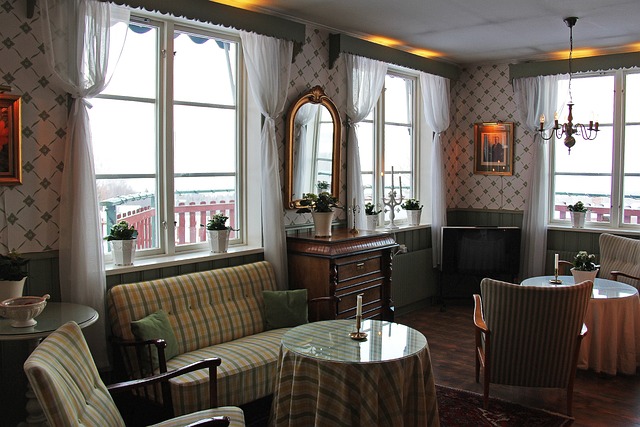Embrace Secondhand Furniture: A Smart, Stylish, and Sustainable Living Choice
Choosing secondhand furniture has become increasingly popular among homeowners seeking to create beautiful living spaces while making environmentally conscious decisions. This approach to furnishing homes offers significant financial advantages, unique design opportunities, and contributes to reducing waste in our communities. From vintage treasures to gently used contemporary pieces, the secondhand furniture market provides endless possibilities for creating personalized interiors that reflect individual style preferences.

The furniture market has witnessed a remarkable shift as more homeowners discover the advantages of choosing pre-owned pieces over brand-new alternatives. This movement represents more than just cost savings—it embodies a thoughtful approach to consumption that benefits both personal finances and environmental sustainability.
Benefits of Second-hand Furniture
Purchasing pre-owned furniture delivers substantial financial advantages while supporting environmental conservation efforts. Quality furniture pieces often retain their structural integrity for decades, making secondhand options excellent investments. Buyers can access high-end brands and solid wood construction at significantly reduced prices compared to retail alternatives.
The environmental benefits extend beyond individual savings. Each secondhand furniture purchase prevents usable items from entering landfills while reducing demand for new manufacturing processes. This cycle conserves natural resources, reduces carbon emissions associated with production and transportation, and supports circular economy principles.
Secondhand furniture also offers unique character and craftsmanship that modern mass-produced items often lack. Vintage and antique pieces frequently feature superior construction methods, rare wood species, and distinctive design elements that add personality to living spaces.
Acquisition Channels
Multiple channels provide access to quality secondhand furniture, each offering distinct advantages for different shopping preferences. Estate sales present opportunities to discover complete furniture collections, often featuring coordinated pieces from single households. These events typically offer competitive pricing and authentic vintage items.
Online marketplaces have revolutionized secondhand furniture shopping, providing extensive selection and convenient browsing options. Platforms like Facebook Marketplace, Craigslist, and specialized furniture resale websites connect buyers with local sellers. Professional online consignment stores offer curated selections with detailed descriptions and quality guarantees.
Thrift stores and consignment shops provide regular inventory turnover and affordable options for budget-conscious shoppers. Auction houses specialize in higher-end pieces, antiques, and unique collectibles that appeal to serious collectors and design enthusiasts.
Furniture Type
Different furniture categories present varying advantages when purchased secondhand. Solid wood dining tables, dressers, and bookcases often represent exceptional value due to their durability and timeless appeal. These pieces typically age gracefully and can withstand refinishing projects that restore their original beauty.
Upholstered furniture requires more careful evaluation but can offer significant savings on quality pieces. Sofas, chairs, and ottomans with solid frames can be reupholstered to match current decor preferences while maintaining structural integrity. Leather furniture often improves with age, developing attractive patina that enhances its character.
Storage furniture including armoires, china cabinets, and credenzas provide both functionality and style at reduced costs. These pieces often feature superior construction compared to modern alternatives and offer unique design elements that complement various decorating styles.
| Furniture Type | Average Cost Savings | Key Considerations |
|---|---|---|
| Solid Wood Tables | 40-70% | Check for structural damage, water rings |
| Upholstered Chairs | 50-80% | Inspect frame condition, reupholstering costs |
| Storage Cabinets | 30-60% | Verify door alignment, drawer functionality |
| Bedroom Sets | 45-75% | Assess mattress support, hardware condition |
Prices, rates, or cost estimates mentioned in this article are based on the latest available information but may change over time. Independent research is advised before making financial decisions.
Maintenance and Upkeep
Proper maintenance ensures secondhand furniture continues providing value and beauty for years to come. Regular cleaning with appropriate products preserves finishes and prevents deterioration. Wood furniture benefits from periodic conditioning with quality oils or waxes that nourish the material and maintain its luster.
Minor repairs often extend furniture lifespan significantly while maintaining its character. Simple fixes like tightening loose joints, replacing missing hardware, or touching up scratches can restore functionality and appearance. More extensive restoration projects can transform worn pieces into stunning focal points.
Preventive care protects secondhand furniture investments through proper placement away from direct sunlight, heat sources, and high humidity areas. Using coasters, placemats, and protective pads prevents damage while allowing normal use of these functional pieces.
Regular inspection helps identify potential issues before they become major problems. Checking for loose screws, worn mechanisms, and finish deterioration allows for timely maintenance that preserves both function and value.
Secondhand furniture represents a smart intersection of financial prudence, environmental responsibility, and design creativity. This approach to furnishing homes provides access to quality pieces while supporting sustainable consumption practices that benefit both individual households and broader environmental goals.




